
Mechanitis polymnia, the orange-spotted tiger clearwing or disturbed tigerwing, is a butterfly of the family Nymphalidae. It is found from Mexico to the Amazon rainforest. The wingspan is 65–75 mm (2.6–3.0 in). The larvae feed on Solanum species.
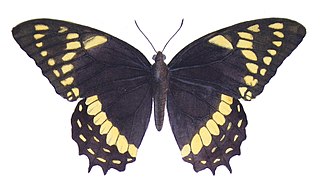
Papilio menatius is a butterfly of the family Papilionidae.

Mechanitis is a genus of butterflies in the tribe Ithomiini, commonly known as tigerwings. They were named by Johan Christian Fabricius in 1807. They are in the brush-footed butterfly family, Nymphalidae. Members of the genus Mechanitis were named for the machine-like metallic appearance of the chrysalis in certain species such as the Mechanitis polymnia. The chrysalises have a reflective chitin coating with a metallic appearance.

Heliconius numata, the Numata longwing, is a brush-footed butterfly species belonging to the family Nymphalidae, subfamily Heliconiinae.

Tithorea tarricina, the tarricina longwing, variable presonian, or cream-spotted tigerwing, is a species of butterfly belonging to the family Nymphalidae.
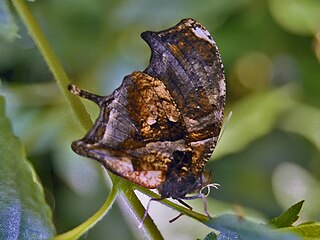
Consul fabius, the tiger leafwing, is the most common and well known species of the genus Consul of subfamily Charaxinae in the brush-footed butterfly family (Nymphalidae). It is found all over the Neotropics.

Eueides aliphera, the Juliette, is a species of nymphalid butterfly, belonging to Heliconiinae subfamily found in the Neotropical ecozone.

Eurytides dolicaon, the dolicaon kite swallowtail, is a butterfly of the family Papilionidae.

Elzunia humboldt is a species of butterfly of the family Nymphalidae, subfamily Danainae, tribus Ithomiini.

Opsiphanes cassina, the split-banded owlet, is a species of butterfly belonging to the family Nymphalidae.

Adelpha justina is a species of butterfly of the family Nymphalidae.

Adelpha lycorias, the pink-banded sister, is a species of butterfly of the family Nymphalidae.
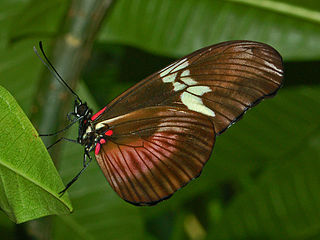
Heliconius hortense, the Mexican longwing, Mexican heliconian or mountain longwing, is a heliconiid butterfly.

Mechanitis mazaeus, the Mazaeus tigerwing, is a species of butterfly of the family Nymphalidae. It is found in South America.
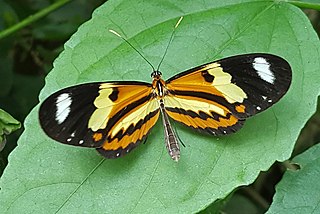
Mechanitis lysimnia, the confused tigerwing, sweet-oil tiger or lysimnia tigerwing, is a species of butterfly of the family Nymphalidae. It was described by Johan Christian Fabricius in 1793. It is found in Central and South America, from southern Mexico to Uruguay. The habitat consists of disturbed forests at altitudes up to 1,500 metres (4,900 ft).

Mechanitis menapis, the Menapis tigerwing or variable tigerwing, is a species of butterfly of the family Nymphalidae. It was described by William Chapman Hewitson in 1856. It is found in South America.

Mimoides pausanias, the Pausanias swallowtail or bluish mimic-swallowtail, is a species of butterfly in the family Papilionidae.
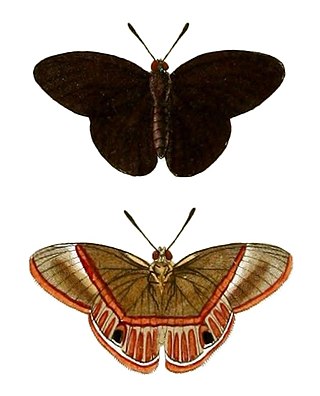
Euselasia is a genus of butterflies in the family Riodinidae. They are present only in the Neotropical realm. The genus was erected by Jacob Hübner in 1819.

Calospila is a butterfly genus in the family Riodinidae. They are resident in the Americas.

Doxocopa cyane, the Mexican emperor or cyan emperor, is a species of butterfly of the family Nymphalidae.

















